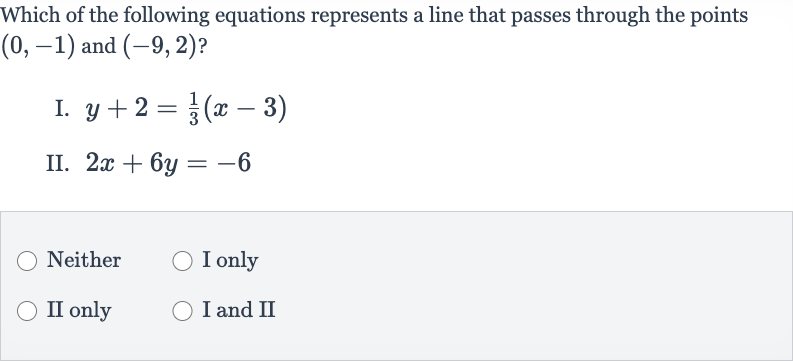Full solution
Q. Which of the following equations represents a line that passes through the points and ?I. II. NeitherI onlyII onlyI and II
- Calculate Slope: Find the slope of the line passing through the points and . The slope is calculated using the formula .
- Write Point-Slope Equation: Use the slope and one of the points to write the equation of the line in point-slope form.We can use the point and the slope .The point-slope form is .
- Convert to Slope-Intercept Form: Convert the point-slope form to slope-intercept form to make it easier to compare with the given equations.Subtract from both sides to isolate .
- Compare with Given Equations: Compare the derived equation with the given equations.I. does not match because the slope is positive and the y-intercept is not .II. can be rewritten in slope-intercept form to check if it matches.Divide the entire equation by to isolate .This matches the derived equation.
- Determine Correct Equation: Determine which of the given equations, if any, represent the line that passes through the points and .Equation I does not represent the line because the slope and -intercept do not match.Equation II does represent the line because, after simplification, it matches the derived equation.
More problems from Write a quadratic function from its x-intercepts and another point
QuestionGet tutor help
QuestionGet tutor help
QuestionGet tutor help
QuestionGet tutor help
QuestionGet tutor help
QuestionGet tutor help
QuestionGet tutor help
QuestionGet tutor help

